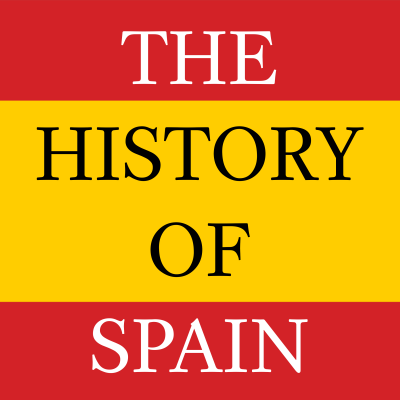
The History of Spain Podcast
By David Cot
Biweekly podcast on the history of Spain following a chronological order.
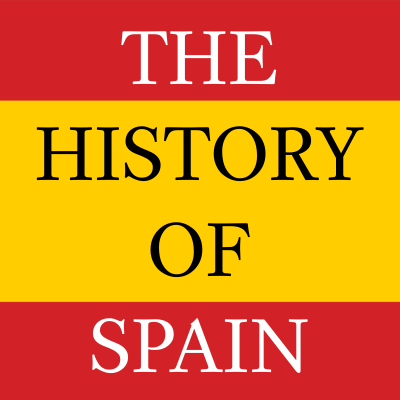
The History of Spain PodcastAug 09, 2019
00:00
42:18

The end
Today I’m announcing the cancellation of The History of Spain Podcast, and instead I’m making […]
Nov 28, 202006:41
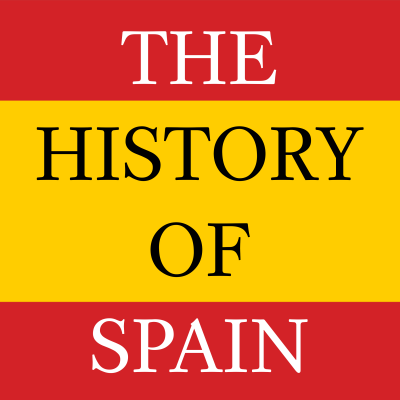
Al-Hakam II, the cultivated caliph
This is episode 46 called al-Hakam II, the cultivated caliph, and in this episode you […]
Oct 27, 202039:26

Umayyad interventions
This is episode 45 called Umayyad interventions and in this episode you will learn:<br />
<br />
SHOW NOTES<br />
- A brief overview of the history of Catalonia of the 950s and 960s<br />
- Muslim expeditions against the Kingdom of León during the reign of Ordoño III<br />
- The Umayyad interventions in North Africa and Umayyad-Fatimid conflict in the 950s<br />
- Civil war during the reign of Ordoño III of León and its aftermath<br />
- The coup d’état against Sancho the Fat<br />
- The trip of Toda of Pamplona and Sancho the Fat to Córdoba to ask for the help of Abd al-Rahman III<br />
- The Umayyad-Christian coalition to depose Ordoño IV of León<br />
- The legacy of Abd al-Rahman III<br />
- The humiliating audience of Ordoño IV with al-Hakam II of Córdoba<br />
- The failed Christian anti-Cordoban coalition and the succession of Sancho the Fat<br />
- A reflection about why the fact that Christian rulers declared themselves vassals of the Caliphate of Córdoba is often forgotten
<br />
SHOW NOTES<br />
- A brief overview of the history of Catalonia of the 950s and 960s<br />
- Muslim expeditions against the Kingdom of León during the reign of Ordoño III<br />
- The Umayyad interventions in North Africa and Umayyad-Fatimid conflict in the 950s<br />
- Civil war during the reign of Ordoño III of León and its aftermath<br />
- The coup d’état against Sancho the Fat<br />
- The trip of Toda of Pamplona and Sancho the Fat to Córdoba to ask for the help of Abd al-Rahman III<br />
- The Umayyad-Christian coalition to depose Ordoño IV of León<br />
- The legacy of Abd al-Rahman III<br />
- The humiliating audience of Ordoño IV with al-Hakam II of Córdoba<br />
- The failed Christian anti-Cordoban coalition and the succession of Sancho the Fat<br />
- A reflection about why the fact that Christian rulers declared themselves vassals of the Caliphate of Córdoba is often forgotten
Oct 12, 202049:31
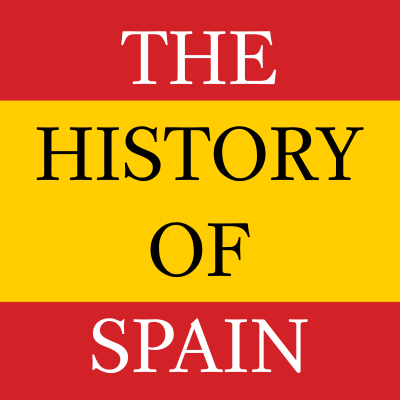
Slavery and Jews of al-Andalus
This is episode 44 called Slavery and Jews of al-Andalus and in this episode you will learn:<br />
<br />
SHOW NOTES<br />
<br />
- Introduction to slavery in the Islamic world and al-Andalus<br />
- What’s the difference between a captive and a slave<br />
- Captivity for women and the social problem that captivity supposed<br />
- Which were the occupations and jobs performed by slaves in al-Andalus<br />
- Captivity and slavery in the context of the campaigns of Almanzor<br />
- What determined the price of a slave and how were auctions and transactions done<br />
- Jews under early Umayyad rule and the case of Eleazar of Zaragoza<br />
- Why Jews in al-Andalus were Arabized but not Islamized<br />
- A brief biography of the great foreign minister and physician Hasdai ibn Shaprut<br />
- Jews under the Taifa kingdoms, the case of Samuel HaNagrid, and the Golden Age of Jewish culture<br />
- The end of the Jewish golden age in al-Andalus, with the 1066 Granada Massacre and the arrival of the Almoravids<br />
- The expulsion and forced conversions of Christians and Jews under the Almohads<br />
- Why Jews were sometimes tolerated and sometimes suffered repression, understanding the political and economic logic behind it<br />
- A reflection on the lives of captives and enslaved people
<br />
SHOW NOTES<br />
<br />
- Introduction to slavery in the Islamic world and al-Andalus<br />
- What’s the difference between a captive and a slave<br />
- Captivity for women and the social problem that captivity supposed<br />
- Which were the occupations and jobs performed by slaves in al-Andalus<br />
- Captivity and slavery in the context of the campaigns of Almanzor<br />
- What determined the price of a slave and how were auctions and transactions done<br />
- Jews under early Umayyad rule and the case of Eleazar of Zaragoza<br />
- Why Jews in al-Andalus were Arabized but not Islamized<br />
- A brief biography of the great foreign minister and physician Hasdai ibn Shaprut<br />
- Jews under the Taifa kingdoms, the case of Samuel HaNagrid, and the Golden Age of Jewish culture<br />
- The end of the Jewish golden age in al-Andalus, with the 1066 Granada Massacre and the arrival of the Almoravids<br />
- The expulsion and forced conversions of Christians and Jews under the Almohads<br />
- Why Jews were sometimes tolerated and sometimes suffered repression, understanding the political and economic logic behind it<br />
- A reflection on the lives of captives and enslaved people
Sep 25, 202043:37

Fernán González, Count of Castile
This is episode 43 called Fernán González, Count of Castile, and in this episode you […]
Sep 11, 202044:16

Battle of Simancas
This is episode 42 called Battle of Simancas and in this episode you will learn:<br />
<br />
SHOW NOTES<br />
<br />
- Who Ramiro II of León was<br />
- The pompous parade of departure of the campaign of Osma of 934<br />
- The first revolt of Muhammad ibn Hashim of the Banu Tujib clan and the tactical declaration of the Kingdom of Pamplona as vassal of the Caliphate<br />
- The campaign of Osma itself<br />
- The rebellion of Muhammad ibn Hashim, the offensives of the Christians, and the submission of Zaragoza<br />
- The treaty of submission of Zaragoza and its implications<br />
- The preparation of the campaign of the Omnipotence<br />
- The Battle of Simancas-Alhándega and why the Caliphal forces were defeated<br />
- Public execution of the traitors of Simancas at Medina Azahara and the Umayyad social contract<br />
- The long-lasting consequences of the Battle of Simancas<br />
- The immediate aftermath of the battle
<br />
SHOW NOTES<br />
<br />
- Who Ramiro II of León was<br />
- The pompous parade of departure of the campaign of Osma of 934<br />
- The first revolt of Muhammad ibn Hashim of the Banu Tujib clan and the tactical declaration of the Kingdom of Pamplona as vassal of the Caliphate<br />
- The campaign of Osma itself<br />
- The rebellion of Muhammad ibn Hashim, the offensives of the Christians, and the submission of Zaragoza<br />
- The treaty of submission of Zaragoza and its implications<br />
- The preparation of the campaign of the Omnipotence<br />
- The Battle of Simancas-Alhándega and why the Caliphal forces were defeated<br />
- Public execution of the traitors of Simancas at Medina Azahara and the Umayyad social contract<br />
- The long-lasting consequences of the Battle of Simancas<br />
- The immediate aftermath of the battle
Aug 28, 202043:37
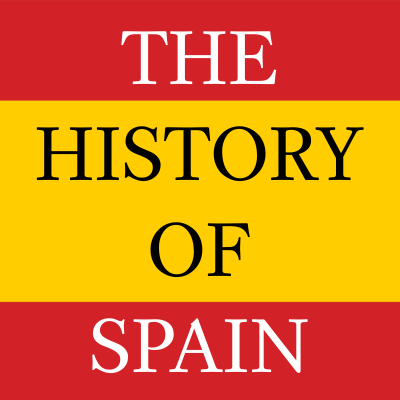
Caliphal Córdoba and Medina Azahara
This is episode 41 called Caliphal Córdoba and Medina Azahara and in this episode you will learn:<br />
<br />
SHOW NOTES<br />
<br />
- An introduction to Caliphal Córdoba<br />
- How Córdoba evolved over time, from being a Roman foundation to the Caliphal era<br />
- Key elements of Córdoba and areas of expansion<br />
- Why the Andalusi capital grew to become a great metropolitan city during the 10th century<br />
- What did the Emirs and Caliphs of Córdoba build to expand Córdoba and improve the living conditions of its inhabitants<br />
- The construction of the palace-city of Medina Azahara, when did works begin and how much it costed<br />
- The legendary story of why Medina Azahara was built and its meaning, and a description of its magnificence<br />
- Court ceremonies and protocol during the Caliphate of Córdoba<br />
- The caliph’s private residence and the family of Abd al-Rahman III<br />
- The second and third terrace of Medina Azahara, and the messages that the complex intended to send<br />
- A reflection about the destruction, preservation and restoration of heritage
<br />
SHOW NOTES<br />
<br />
- An introduction to Caliphal Córdoba<br />
- How Córdoba evolved over time, from being a Roman foundation to the Caliphal era<br />
- Key elements of Córdoba and areas of expansion<br />
- Why the Andalusi capital grew to become a great metropolitan city during the 10th century<br />
- What did the Emirs and Caliphs of Córdoba build to expand Córdoba and improve the living conditions of its inhabitants<br />
- The construction of the palace-city of Medina Azahara, when did works begin and how much it costed<br />
- The legendary story of why Medina Azahara was built and its meaning, and a description of its magnificence<br />
- Court ceremonies and protocol during the Caliphate of Córdoba<br />
- The caliph’s private residence and the family of Abd al-Rahman III<br />
- The second and third terrace of Medina Azahara, and the messages that the complex intended to send<br />
- A reflection about the destruction, preservation and restoration of heritage
Aug 13, 202036:15

Economy of al-Andalus
This is episode 40 called Economy of al-Andalus and in this episode you will learn:<br />
<br />
SHOW NOTES<br />
<br />
- European and Islamic context of the Medieval economy<br />
- Two misconceptions related to the economy of al-Andalus: the static image of al-Andalus and the image of al-Andalus as an urban and commercial economy<br />
- Muslim contributions to the agriculture of Spain and Europe, and the development of agriculture as a necessary condition to develop other sectors<br />
- Brief overview of how the Arabs and Berbers settled in the Iberian Peninsula and how were the Andalusi lands exploited<br />
- Which agricultural products were produced in al-Andalus, and the limitations of the “prosperity” of a pre-industrial economy<br />
- Stockbreeding in al-Andalus<br />
- Mining in al-Andalus<br />
- Brief overview of the fiscal system of Umayyad Spain and the first Taifa period<br />
- The growth and development of cities in Muslim Spain, including the estimated population of several Andalusi cities<br />
- Manufactured products of al-Andalus<br />
- Lengthy discussion about commerce and international trade, including town markets, the role of al-Andalus as a bridge between the East and the West, and the main exports and imports of al-Andalus<br />
- The economic and commercial importance of Almería, and brief summary of the key points of the episode<br />
- A comparison between the economy of Roman Hispania and al-Andalus
<br />
SHOW NOTES<br />
<br />
- European and Islamic context of the Medieval economy<br />
- Two misconceptions related to the economy of al-Andalus: the static image of al-Andalus and the image of al-Andalus as an urban and commercial economy<br />
- Muslim contributions to the agriculture of Spain and Europe, and the development of agriculture as a necessary condition to develop other sectors<br />
- Brief overview of how the Arabs and Berbers settled in the Iberian Peninsula and how were the Andalusi lands exploited<br />
- Which agricultural products were produced in al-Andalus, and the limitations of the “prosperity” of a pre-industrial economy<br />
- Stockbreeding in al-Andalus<br />
- Mining in al-Andalus<br />
- Brief overview of the fiscal system of Umayyad Spain and the first Taifa period<br />
- The growth and development of cities in Muslim Spain, including the estimated population of several Andalusi cities<br />
- Manufactured products of al-Andalus<br />
- Lengthy discussion about commerce and international trade, including town markets, the role of al-Andalus as a bridge between the East and the West, and the main exports and imports of al-Andalus<br />
- The economic and commercial importance of Almería, and brief summary of the key points of the episode<br />
- A comparison between the economy of Roman Hispania and al-Andalus
Jul 25, 202048:20

Towards the Caliphate of Córdoba
This is episode 39 called Towards the Caliphate of Córdoba and in this episode you will learn:<br />
<br />
SHOW NOTES<br />
<br />
- The victorious Cordoban campaign of Muez as a punitive expedition against León and Pamplona<br />
- The Pamplonese conquest of La Rioja in 923, including Nájera, along the incorporation of the County of Aragon<br />
- The destructive punitive campaign of 924 against Pamplona (and to extend Umayyad authority in al-Andalus) and how Sancho Garcés I of Pamplona minimized the potential damage<br />
- Why Abd al-Rahman III’s campaigns against the Christian north didn’t involve conquests and colonizations<br />
- The death of Ordoño II and the brief succession of Fruela II, followed by a succession crisis and civil war in the Kingdom of León<br />
- The death of Sancho Garcés I of Pamplona, first ruler of the Jimena dynasty, and his successor and six-year-old son García Sánchez<br />
- The brutal Umayyad campaigns against the Hafsunids and the fall of Bobastro, representing the near end of the fitna of the Emirate of Córdoba<br />
- The external and domestic reasons that explain the proclamation of the Caliphate of Córdoba in 929<br />
- The surrender of Mérida, Badajoz and Toledo, leaving only Zaragoza as the last city that had yet to really submit to Abd al-Rahman III’s authority<br />
- The Umayyad-Fatimid rivalry and the Umayyad intervention in North Africa between the 920s and the 950s<br />
- The abdication of Alfonso IV of León, followed by a civil war between Ramiro II of León and other members of the royal dynasty<br />
- A reflection on the nature of the proclamation of the Caliphate of Córdoba
<br />
SHOW NOTES<br />
<br />
- The victorious Cordoban campaign of Muez as a punitive expedition against León and Pamplona<br />
- The Pamplonese conquest of La Rioja in 923, including Nájera, along the incorporation of the County of Aragon<br />
- The destructive punitive campaign of 924 against Pamplona (and to extend Umayyad authority in al-Andalus) and how Sancho Garcés I of Pamplona minimized the potential damage<br />
- Why Abd al-Rahman III’s campaigns against the Christian north didn’t involve conquests and colonizations<br />
- The death of Ordoño II and the brief succession of Fruela II, followed by a succession crisis and civil war in the Kingdom of León<br />
- The death of Sancho Garcés I of Pamplona, first ruler of the Jimena dynasty, and his successor and six-year-old son García Sánchez<br />
- The brutal Umayyad campaigns against the Hafsunids and the fall of Bobastro, representing the near end of the fitna of the Emirate of Córdoba<br />
- The external and domestic reasons that explain the proclamation of the Caliphate of Córdoba in 929<br />
- The surrender of Mérida, Badajoz and Toledo, leaving only Zaragoza as the last city that had yet to really submit to Abd al-Rahman III’s authority<br />
- The Umayyad-Fatimid rivalry and the Umayyad intervention in North Africa between the 920s and the 950s<br />
- The abdication of Alfonso IV of León, followed by a civil war between Ramiro II of León and other members of the royal dynasty<br />
- A reflection on the nature of the proclamation of the Caliphate of Córdoba
Jul 11, 202045:08

Umayyad Resurgence
This is episode 38 called Umayyad Resurgence and in this episode you will learn:<br />
<br />
SHOW NOTES<br />
<br />
- Who Abd al-Rahman III was and the difficult situation that he faced in 912<br />
- How could the Emir suppress the revolts that plagued al-Andalus, including his political strategy and the recruitment of mercenaries and slaves<br />
- An example of the diplomatic approach of Abd al-Rahman<br />
- The bitter Monteleón campaign against Umar ibn Hafsun and the reconquest of Seville<br />
- The sudden and tragic end of Alfonso III’s reign and his legacy<br />
- The transition from the Kingdom of Asturias to the Kingdom of León<br />
- The brief reign of García I and the first campaigns of King Ordoño II of León<br />
- The 915 famine and the surrender of the old Umar ibn Hafsun, as well as other victorious Umayyad campaigns<br />
- The first jihad of Abd al-Rahman III against the Kingdom of León, ending up in the disastrous Battle of San Esteban de Gormaz for the Umayyads<br />
- A comparison between Abd al-Rahman I and Abd al-Rahman III
<br />
SHOW NOTES<br />
<br />
- Who Abd al-Rahman III was and the difficult situation that he faced in 912<br />
- How could the Emir suppress the revolts that plagued al-Andalus, including his political strategy and the recruitment of mercenaries and slaves<br />
- An example of the diplomatic approach of Abd al-Rahman<br />
- The bitter Monteleón campaign against Umar ibn Hafsun and the reconquest of Seville<br />
- The sudden and tragic end of Alfonso III’s reign and his legacy<br />
- The transition from the Kingdom of Asturias to the Kingdom of León<br />
- The brief reign of García I and the first campaigns of King Ordoño II of León<br />
- The 915 famine and the surrender of the old Umar ibn Hafsun, as well as other victorious Umayyad campaigns<br />
- The first jihad of Abd al-Rahman III against the Kingdom of León, ending up in the disastrous Battle of San Esteban de Gormaz for the Umayyads<br />
- A comparison between Abd al-Rahman I and Abd al-Rahman III
Jun 24, 202042:31
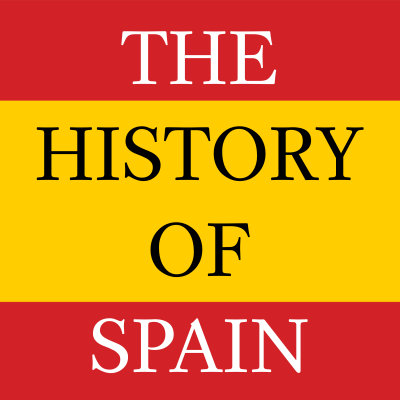
Umayyads in peril
This is episode 37 called Umayyads in peril and in this episode you will learn:<br />
<br />
SHOW NOTES<br />
<br />
- The short reign of Emir al-Mundhir<br />
- The personality of Emir Abd Allah and the big picture of his reign<br />
- The qasi-Taifa states of Murcia and Seville, respectively ruled by Daysam ibn Ishaq and the Banu Hayyay clan<br />
- The story of the maritime Republic of Pechina, in Almería<br />
- The Muslim conquest of the Balearic Islands under Isam al-Hawlani<br />
- The Berber and Messianic movement that ended up in the Day of Zamora<br />
- The peak of Umar ibn Hafsun’s power and the loss of initiative<br />
- Why the Umayyad dynasty of Córdoba managed to survived this turbulent period and an illustrative example of the extreme fragility of Umayyad rule<br />
- A general overview of the situation of Medieval Spain before Abd al-Rahman III’s accession to the throne<br />
- An effort to imagine how the average Andalusi lived during this period
<br />
SHOW NOTES<br />
<br />
- The short reign of Emir al-Mundhir<br />
- The personality of Emir Abd Allah and the big picture of his reign<br />
- The qasi-Taifa states of Murcia and Seville, respectively ruled by Daysam ibn Ishaq and the Banu Hayyay clan<br />
- The story of the maritime Republic of Pechina, in Almería<br />
- The Muslim conquest of the Balearic Islands under Isam al-Hawlani<br />
- The Berber and Messianic movement that ended up in the Day of Zamora<br />
- The peak of Umar ibn Hafsun’s power and the loss of initiative<br />
- Why the Umayyad dynasty of Córdoba managed to survived this turbulent period and an illustrative example of the extreme fragility of Umayyad rule<br />
- A general overview of the situation of Medieval Spain before Abd al-Rahman III’s accession to the throne<br />
- An effort to imagine how the average Andalusi lived during this period
Jun 13, 202040:35

Birth of Catalonia
This is episode 36 called Birth of Catalonia and in this episode you will learn:<br />
<br />
SHOW NOTES<br />
<br />
- Why the title of the episode is misleading<br />
- The chaos within the Carolingian Empire, like in the Emirate of Córdoba, and the government of Odalrico and Hunifredo<br />
- The traditional, legendary story of how Wifredo the Hairy, of the House of Barcelona, seized power<br />
- The real story of how Wifredo the Hairy became Count of Barcelona and how Wifredo’s family monopolized both secular and religious posts in the Marca Hispanica<br />
- The gradual independence of the Catalan counties after the deposition of Carolingian emperor Charles the Fat, and how that contrasts with the myths that originated in the late Medieval period<br />
- The first attempt to make the dioceses of Catalonia independent from the archbishop fo Narbonne<br />
- The different popular and official repopulations during Wifredo’s rule<br />
- Why the Christian repopulations occurred and how was life in the borderlands<br />
- How Count Wifredo the Hairy died fighting the Banu Qasi and the continuist rule of Wifredo II<br />
- The Legend of the Four Blood Bars, that gives a different version of how Wifredo the Hairy died and how the Senyera was created<br />
- The legacy and importance of Count Wifredo the Hairy<br />
- A reflection on how his historical figure is manipulated to serve the purposes of the Catalan separatist agenda
<br />
SHOW NOTES<br />
<br />
- Why the title of the episode is misleading<br />
- The chaos within the Carolingian Empire, like in the Emirate of Córdoba, and the government of Odalrico and Hunifredo<br />
- The traditional, legendary story of how Wifredo the Hairy, of the House of Barcelona, seized power<br />
- The real story of how Wifredo the Hairy became Count of Barcelona and how Wifredo’s family monopolized both secular and religious posts in the Marca Hispanica<br />
- The gradual independence of the Catalan counties after the deposition of Carolingian emperor Charles the Fat, and how that contrasts with the myths that originated in the late Medieval period<br />
- The first attempt to make the dioceses of Catalonia independent from the archbishop fo Narbonne<br />
- The different popular and official repopulations during Wifredo’s rule<br />
- Why the Christian repopulations occurred and how was life in the borderlands<br />
- How Count Wifredo the Hairy died fighting the Banu Qasi and the continuist rule of Wifredo II<br />
- The Legend of the Four Blood Bars, that gives a different version of how Wifredo the Hairy died and how the Senyera was created<br />
- The legacy and importance of Count Wifredo the Hairy<br />
- A reflection on how his historical figure is manipulated to serve the purposes of the Catalan separatist agenda
May 22, 202039:49

Christians vs Muladis
This is episode 35 called Christians vs Muladis and in this episode you will learn:<br />
<br />
SHOW NOTES<br />
<br />
- Announcement of the social media plan I’m executing this May<br />
- Recap and main characters of Christians vs Muladis<br />
- The consolidation of the Kingdom of Asturias, with the repopulation of Zamora<br />
- The foundation of Burgos in the County of Castile and the temporary division of Castile<br />
- What happened in the Kingdom of Pamplona of the Aristas, from 860 to 905<br />
- The last two great Banu Qasi leaders: Muhammad ibn Lubb and Lubb ibn Muhammad<br />
- How the Arista dynasty was deposed and replaced by another great Basque linage, the Jimenos<br />
- The disappearence of the Banu Qasi clan and the absorption of the County of Aragon by the Kingdom of Pamplona of Sancho I of Pamplona<br />
- The creation of the independent County of Ribagorza-Pallars between Aragon and Catalonia under Count Ramón<br />
- A brief overview of the economy of the Kingdom of Asturias<br />
- A reflection on the importance of this period for the consolidation of the Kingdoms of Asturias and Pamplona
<br />
SHOW NOTES<br />
<br />
- Announcement of the social media plan I’m executing this May<br />
- Recap and main characters of Christians vs Muladis<br />
- The consolidation of the Kingdom of Asturias, with the repopulation of Zamora<br />
- The foundation of Burgos in the County of Castile and the temporary division of Castile<br />
- What happened in the Kingdom of Pamplona of the Aristas, from 860 to 905<br />
- The last two great Banu Qasi leaders: Muhammad ibn Lubb and Lubb ibn Muhammad<br />
- How the Arista dynasty was deposed and replaced by another great Basque linage, the Jimenos<br />
- The disappearence of the Banu Qasi clan and the absorption of the County of Aragon by the Kingdom of Pamplona of Sancho I of Pamplona<br />
- The creation of the independent County of Ribagorza-Pallars between Aragon and Catalonia under Count Ramón<br />
- A brief overview of the economy of the Kingdom of Asturias<br />
- A reflection on the importance of this period for the consolidation of the Kingdoms of Asturias and Pamplona
May 10, 202040:18
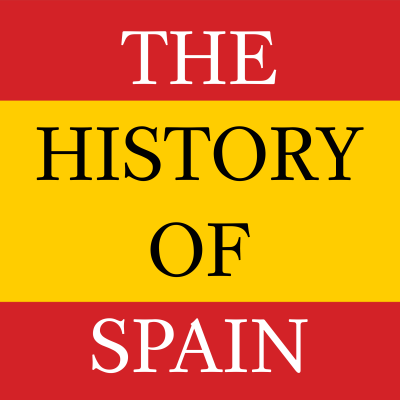
County of Castile and Portugal
This is episode 34 called County of Castile and Portugal and in this episode you will learn:<br />
<br />
SHOW NOTES<br />
<br />
- The repopulation of León, Astorga, Tuy and Amaya Patricia under King Ordoño I of Asturias<br />
- Who was the first Count of Castile<br />
- What do we know about primitive Castile, the County of Castile and County of Álava<br />
- The role of Count Rodrigo of Castile as a military leader<br />
- The troubled accession of Alfonso III<br />
- What kind of king Alfonso III of Asturias was<br />
- Neogothicism and the ideology of the Reconquista<br />
- The foundation of the County of Portugal and County of Coimbra<br />
- How was the repopulation of the Desert of the Duero done in practice<br />
- Who participated in the Christian repopulations and property rights<br />
- The cartas pueblas<br />
- What were the colonists looking for
<br />
SHOW NOTES<br />
<br />
- The repopulation of León, Astorga, Tuy and Amaya Patricia under King Ordoño I of Asturias<br />
- Who was the first Count of Castile<br />
- What do we know about primitive Castile, the County of Castile and County of Álava<br />
- The role of Count Rodrigo of Castile as a military leader<br />
- The troubled accession of Alfonso III<br />
- What kind of king Alfonso III of Asturias was<br />
- Neogothicism and the ideology of the Reconquista<br />
- The foundation of the County of Portugal and County of Coimbra<br />
- How was the repopulation of the Desert of the Duero done in practice<br />
- Who participated in the Christian repopulations and property rights<br />
- The cartas pueblas<br />
- What were the colonists looking for
Mar 21, 202040:30

Muladis in Revolt
This is episode 33 called Muladis in Revolt and in this episode you will learn: […]
Mar 07, 202043:17

Vikings in Spain and Mozarabs
This is episode 32 called Vikings in Spain and Mozarabs and in this episode you […]
Feb 28, 202042:07

Banu Qasi
This is episode 31 called Banu Qasi and in this episode you will learn: Show […]
Feb 12, 202035:26
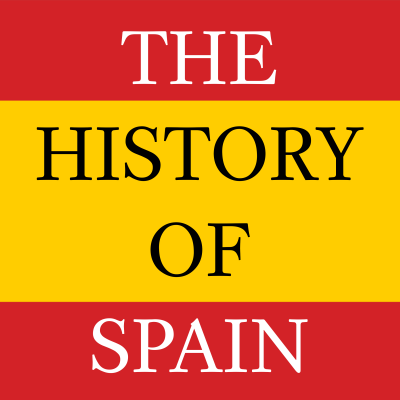
Reforms of Abd al-Rahman II
This is episode 30 called Reforms of Abd al-Rahman II and in this episode you will learn:<br />
<br />
SHOW NOTES<br />
<br />
- Global context of the first half of the 9th century<br />
- A background of Emir Abd al-Rahman II<br />
- The early dynastic and territorial revolts of his reign<br />
- How Abd al-Rahman II reformed and reorganized the administration of the Emirate of Córdoba, in emulation to the centralized model of the Abbasid Caliphate<br />
- The sophistication of the Cordoban court and the economic and fiscal reforms<br />
- The ambitious civil and religious construction program of Abd al-Rahman’s reign<br />
- How Ziryab transformed the culture of al-Andalus and the cultural, intellectual and artistic changes that were coming from the East<br />
- The foreign policy objective and implementation of projecting the political and commercial power of the Emirate of Córdoba in the Western Mediterranean<br />
- The other foreign policy objective to maintain the supremacy of Córdoba in the Iberian Peninsula<br />
- A reflection on the limits of Abd al-Rahman’s reforms
<br />
SHOW NOTES<br />
<br />
- Global context of the first half of the 9th century<br />
- A background of Emir Abd al-Rahman II<br />
- The early dynastic and territorial revolts of his reign<br />
- How Abd al-Rahman II reformed and reorganized the administration of the Emirate of Córdoba, in emulation to the centralized model of the Abbasid Caliphate<br />
- The sophistication of the Cordoban court and the economic and fiscal reforms<br />
- The ambitious civil and religious construction program of Abd al-Rahman’s reign<br />
- How Ziryab transformed the culture of al-Andalus and the cultural, intellectual and artistic changes that were coming from the East<br />
- The foreign policy objective and implementation of projecting the political and commercial power of the Emirate of Córdoba in the Western Mediterranean<br />
- The other foreign policy objective to maintain the supremacy of Córdoba in the Iberian Peninsula<br />
- A reflection on the limits of Abd al-Rahman’s reforms
Jan 28, 202037:13

History of Spain Podcast Q&A #1
The History of Spain Podcast Q&A #1 answers some important questions related to Spanish history, identity, culture and more. These include questions from the Visigothic period to Franco and contemporary Spain, questions such as when did Spain become Spain, or my views on bullfighting. To discover all the questions and answers, listen to it!
Jan 15, 202040:27
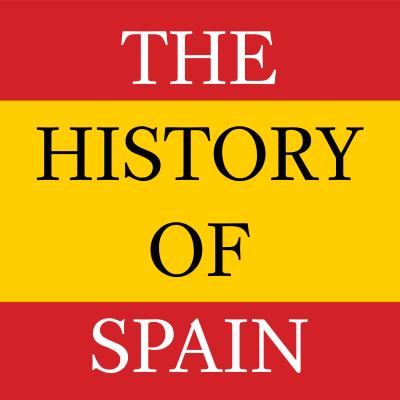
Kingdom of Pamplona and County of Aragon
This is episode 29 called Kingdom of Pamplona and County of Aragon and in this episode you will learn:<br />
<br />
SHOW NOTES<br />
<br />
- Why Vasconia has always been subject to external attacks<br />
- How the Carolingian Empire and Emirate of Córdoba fought to control Iberian Vasconia and how that led to the emergence of pro-Frankish and pro-Umayyad Basque parties<br />
- The assassination of the Banu Qasi governor of Pamplona, led by Velasco the Basque who represented the pro-Frankish party<br />
- How Íñigo Arista, supported by the Banu Qasi and Córdoba, gained control of Pamplona<br />
- Why the Kingdom of Pamplona is not considered a kingdom and the game of double legimitacy<br />
- The origins of the County of Aragon, briefly under the Carolingian Empire and how García the Bad made the County of Aragon a vassal of Pamplona instead<br />
- The last attempt of the Carolingian Empire to regain control over the Western Pyrenees, the Second Battle of Roncesvalles and its consequences<br />
- What kind of relationship did the Banu Qasi and Arista-Íñigo dynasty had<br />
- The political history of the County of Aragon in the 9th century and the origins of surnames like Sánchez or García<br />
- Brief talk about social and economic aspects of the Kingdom of Pamplona and the County of Aragon<br />
- What are the origins of the Basques (genetic studies)<br />
- The external history of the Basque language, why its usage declined and the current situation of Euskera<br />
- Reflection on the pragmatic relationship between the Kingdom of Pamplona and the Banu Qasi
<br />
SHOW NOTES<br />
<br />
- Why Vasconia has always been subject to external attacks<br />
- How the Carolingian Empire and Emirate of Córdoba fought to control Iberian Vasconia and how that led to the emergence of pro-Frankish and pro-Umayyad Basque parties<br />
- The assassination of the Banu Qasi governor of Pamplona, led by Velasco the Basque who represented the pro-Frankish party<br />
- How Íñigo Arista, supported by the Banu Qasi and Córdoba, gained control of Pamplona<br />
- Why the Kingdom of Pamplona is not considered a kingdom and the game of double legimitacy<br />
- The origins of the County of Aragon, briefly under the Carolingian Empire and how García the Bad made the County of Aragon a vassal of Pamplona instead<br />
- The last attempt of the Carolingian Empire to regain control over the Western Pyrenees, the Second Battle of Roncesvalles and its consequences<br />
- What kind of relationship did the Banu Qasi and Arista-Íñigo dynasty had<br />
- The political history of the County of Aragon in the 9th century and the origins of surnames like Sánchez or García<br />
- Brief talk about social and economic aspects of the Kingdom of Pamplona and the County of Aragon<br />
- What are the origins of the Basques (genetic studies)<br />
- The external history of the Basque language, why its usage declined and the current situation of Euskera<br />
- Reflection on the pragmatic relationship between the Kingdom of Pamplona and the Banu Qasi
Dec 26, 201940:14

Camino de Santiago and Spanish Romance languages
This is episode 28 called Camino de Santiago and Spanish Romance languages and in this episode you will learn:<br />
<br />
SHOW NOTES<br />
<br />
- The background of the Revolt of Arrabal or Revolt of the Suburb<br />
- The Revolt of Arrabal and the brutal aftermath<br />
- Why al-Hakam reconciled with the Maliki ulema who instigated the revolt and how al-Hakam secured the succession<br />
- The legacy that Abd al-Rahman II inherited from al-Hakam<br />
- The origins of the link between Santiago el Mayor or Saint James the Great and Spain<br />
- What's the story behind the discovery of the alleged tomb of Santiago in Santiago de Compostela<br />
- What long-term consequences had the Camino de Santiago for the Kingdom of Asturias and later Spain<br />
- Clarification of a few concepts about languages and Latin, and the development of Romance languages throughout Europe<br />
- The origins and development of the Spanish Romance languages: Mozarabic, Catalan, Galician-Portuguese, Navarro-Aragonese, Astur-Leonese and Castilian / Spanish<br />
- A reflection about the figure of Santiago Matamoros or Saint James the Moor-slayer
<br />
SHOW NOTES<br />
<br />
- The background of the Revolt of Arrabal or Revolt of the Suburb<br />
- The Revolt of Arrabal and the brutal aftermath<br />
- Why al-Hakam reconciled with the Maliki ulema who instigated the revolt and how al-Hakam secured the succession<br />
- The legacy that Abd al-Rahman II inherited from al-Hakam<br />
- The origins of the link between Santiago el Mayor or Saint James the Great and Spain<br />
- What's the story behind the discovery of the alleged tomb of Santiago in Santiago de Compostela<br />
- What long-term consequences had the Camino de Santiago for the Kingdom of Asturias and later Spain<br />
- Clarification of a few concepts about languages and Latin, and the development of Romance languages throughout Europe<br />
- The origins and development of the Spanish Romance languages: Mozarabic, Catalan, Galician-Portuguese, Navarro-Aragonese, Astur-Leonese and Castilian / Spanish<br />
- A reflection about the figure of Santiago Matamoros or Saint James the Moor-slayer
Dec 14, 201942:52

Marca Hispanica
This is episode 27 called Marca Hispanica and in this episode you will learn:<br />
<br />
SHOW NOTES<br />
<br />
- The dynastic struggle between al-Hakam and the brothers of former Emir Hisham, Sulayman and Abd Allah<br />
- The conspiracy of Córdoba in 805 led by Maliki jurists and scholars<br />
- The formation of a feared bodyguard known as The Mutes<br />
- The story of the Day of the Moat, following the revolt of Toledo<br />
- The revolts of the other capitals of the marches, Mérida and Zaragoza<br />
- How Alfonso II of Asturias strengthened ties with the Carolingian Empire<br />
- Why the Carolingian Empire wanted to control the Pyrenees<br />
- The Frankish conquest of Barcelona in 801, that led to the establishment of the Marca Hispanica<br />
- How the Spanish March was administered and colonized<br />
- What feudalism is<br />
- A reflection on why the Marca Hispanica and later Catalan Counties barely expanded for three centuries
<br />
SHOW NOTES<br />
<br />
- The dynastic struggle between al-Hakam and the brothers of former Emir Hisham, Sulayman and Abd Allah<br />
- The conspiracy of Córdoba in 805 led by Maliki jurists and scholars<br />
- The formation of a feared bodyguard known as The Mutes<br />
- The story of the Day of the Moat, following the revolt of Toledo<br />
- The revolts of the other capitals of the marches, Mérida and Zaragoza<br />
- How Alfonso II of Asturias strengthened ties with the Carolingian Empire<br />
- Why the Carolingian Empire wanted to control the Pyrenees<br />
- The Frankish conquest of Barcelona in 801, that led to the establishment of the Marca Hispanica<br />
- How the Spanish March was administered and colonized<br />
- What feudalism is<br />
- A reflection on why the Marca Hispanica and later Catalan Counties barely expanded for three centuries
Nov 27, 201938:53

Administration of al-Andalus
This is episode 26 called Administration of al-Andalus and in this episode you will learn:<br />
<br />
SHOW NOTES<br />
<br />
- The succession practices of Arab royal families<br />
- The quick war of succession between Hisham and his elder brother Sulayman, following the death of Abd al-Rahman I<br />
- A revolt in Zaragoza that led to the rise of the Banu Amrus<br />
- What characterized the rule of Hisham<br />
- The reign of Bermudo of Asturias and the aceifas of the Emirate of Córdoba under Hisham against the Kingdom of Asturias<br />
- The return of Alfonso II 'the Chaste' from his exile and the definitive capital of Asturias, Oviedo<br />
- The introduction and adoption of the Maliki school of Islamic jurisprudence<br />
- What was the central administration of the Emirate and Caliphate of Córdoba like<br />
- The territorial organization of al-Andalus: interior and frontier marches<br />
- Administration of justice in al-Andalus<br />
- Financial administration of al-Andalus: legal and extralegal taxes, coinage, and how were taxes paid<br />
- An anecdote that shows how the orthodoxy of the Maliki school was not always applied, in this case concerning the consumption of wine
<br />
SHOW NOTES<br />
<br />
- The succession practices of Arab royal families<br />
- The quick war of succession between Hisham and his elder brother Sulayman, following the death of Abd al-Rahman I<br />
- A revolt in Zaragoza that led to the rise of the Banu Amrus<br />
- What characterized the rule of Hisham<br />
- The reign of Bermudo of Asturias and the aceifas of the Emirate of Córdoba under Hisham against the Kingdom of Asturias<br />
- The return of Alfonso II 'the Chaste' from his exile and the definitive capital of Asturias, Oviedo<br />
- The introduction and adoption of the Maliki school of Islamic jurisprudence<br />
- What was the central administration of the Emirate and Caliphate of Córdoba like<br />
- The territorial organization of al-Andalus: interior and frontier marches<br />
- Administration of justice in al-Andalus<br />
- Financial administration of al-Andalus: legal and extralegal taxes, coinage, and how were taxes paid<br />
- An anecdote that shows how the orthodoxy of the Maliki school was not always applied, in this case concerning the consumption of wine
Nov 14, 201942:35
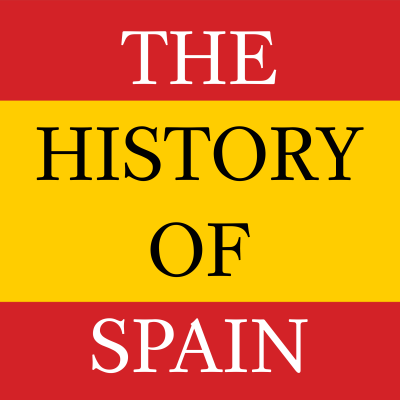
Emirate of Córdoba and Abd al-Rahman
This is episode 25 called Emirate of Córdoba and Abd al-Rahman and in this episode you will learn:<br />
<br />
SHOW NOTES<br />
<br />
- Opposition of former wali Yusuf and Syrian commander al-Sumayl<br />
- Revolts of Yusuf's family, local particularistic revolts and Abbasid-backed conspiracies<br />
- The last stand of Emir Abd al-Rahman in Carmona's fortress<br />
- The autonomy of Muslim cities far from Córdoba and the fall of Narbonne in 759, marking the end of Muslim presence in France<br />
- Charlemagne's first campaign in Spain, resulting in a complete failure and the disaster at the Pass of Roncesvalles<br />
- The organization of an Andalusi standing army, improvement of infrastructure and transformation of the capital of the Emirate, Córdoba<br />
- Start of the building of the Great Mosque of Córdoba<br />
- Analysis of the legacy of Abd al-Rahman I of Córdoba<br />
- How interfaith marriages between Muslim men and Christian women were used to pacify and colonize the Iberian Peninsula<br />
- Status of concubines of the Umayyad court and why concubines were useful to preserve the royal dynasty<br />
- My two cents on interfaith relations during the centuries of Islamic hegemony
<br />
SHOW NOTES<br />
<br />
- Opposition of former wali Yusuf and Syrian commander al-Sumayl<br />
- Revolts of Yusuf's family, local particularistic revolts and Abbasid-backed conspiracies<br />
- The last stand of Emir Abd al-Rahman in Carmona's fortress<br />
- The autonomy of Muslim cities far from Córdoba and the fall of Narbonne in 759, marking the end of Muslim presence in France<br />
- Charlemagne's first campaign in Spain, resulting in a complete failure and the disaster at the Pass of Roncesvalles<br />
- The organization of an Andalusi standing army, improvement of infrastructure and transformation of the capital of the Emirate, Córdoba<br />
- Start of the building of the Great Mosque of Córdoba<br />
- Analysis of the legacy of Abd al-Rahman I of Córdoba<br />
- How interfaith marriages between Muslim men and Christian women were used to pacify and colonize the Iberian Peninsula<br />
- Status of concubines of the Umayyad court and why concubines were useful to preserve the royal dynasty<br />
- My two cents on interfaith relations during the centuries of Islamic hegemony
Oct 30, 201936:51
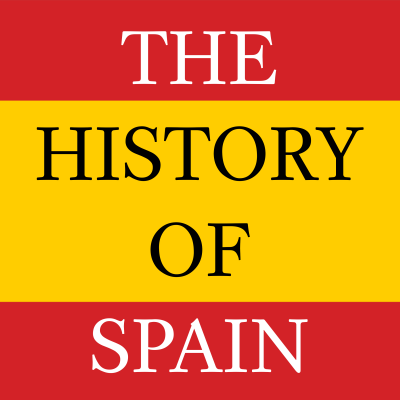
Consolidation of the Kingdom of Asturias
This is episode 24 called Consolidation of the Kingdom of Asturias and in this episode you will learn:<br />
<br />
SHOW NOTES<br />
<br />
- The transformation of Asturias from an Asturias chiefdom to a multi-regional kingdom under Alfonso I of Asturias<br />
- How Alfonso I took advantage of the turmoil, famines and droughts of al-Andalus to conquer, raid, colonize and depopulate<br />
- Formation of the Desert of the Duero, a large no man's land that functioned as a buffer zone between the Kingdom of Asturias and the Emirate of Córdoba<br />
- Economic and demographic changes due to the incorporation of new peoples (Mozarabs, Western Basques and Galicians)<br />
- The revolts of the elites of Galicia and western Vasconia during the reign of Fruela of Asturias<br />
- The role of monasteries in the processes of expansion and colonization of the Reconquista<br />
- What was the royal court of Asturias like<br />
- The causes of the anti-seignorial revolt during the reign of Aurelio<br />
- The reign of Silo and how Alfonso II couldn't yet rule due to the usurpation of Mauregato<br />
- The controversy of Spanish Adoptionism and its role to reaffirm the independence of the Asturian Church and to bring Asturias closer to the Carolingian Empire<br />
- The works of Beato de Liébana, the most prominent intellectual of the Kingdom of Asturias<br />
- Reflection on why Alfonso I couldn't annex the large area of the Duero Valley
<br />
SHOW NOTES<br />
<br />
- The transformation of Asturias from an Asturias chiefdom to a multi-regional kingdom under Alfonso I of Asturias<br />
- How Alfonso I took advantage of the turmoil, famines and droughts of al-Andalus to conquer, raid, colonize and depopulate<br />
- Formation of the Desert of the Duero, a large no man's land that functioned as a buffer zone between the Kingdom of Asturias and the Emirate of Córdoba<br />
- Economic and demographic changes due to the incorporation of new peoples (Mozarabs, Western Basques and Galicians)<br />
- The revolts of the elites of Galicia and western Vasconia during the reign of Fruela of Asturias<br />
- The role of monasteries in the processes of expansion and colonization of the Reconquista<br />
- What was the royal court of Asturias like<br />
- The causes of the anti-seignorial revolt during the reign of Aurelio<br />
- The reign of Silo and how Alfonso II couldn't yet rule due to the usurpation of Mauregato<br />
- The controversy of Spanish Adoptionism and its role to reaffirm the independence of the Asturian Church and to bring Asturias closer to the Carolingian Empire<br />
- The works of Beato de Liébana, the most prominent intellectual of the Kingdom of Asturias<br />
- Reflection on why Alfonso I couldn't annex the large area of the Duero Valley
Oct 14, 201939:41
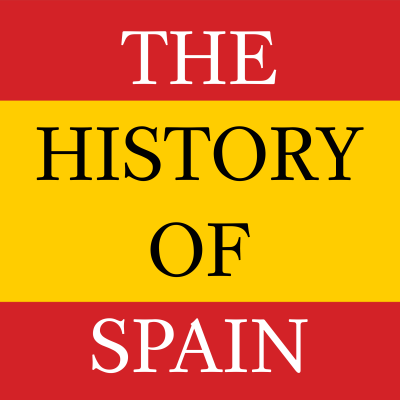
Fall of the Umayyad Caliphate
This is episode 23 called Fall of the Umayyad Caliphate and in this episode you will learn:<br />
<br />
SHOW NOTES<br />
<br />
- Important announcement regarding the new website that has now a store and the start of monetization of the podcast, through Patreon, donations, ads and the store<br />
- The military failures of wali Anbasa and the rise of taxes, leading to increasing internal strife, as it was happening in the rest of the Caliphate<br />
- The reappointment of Abd al-Rahman al-Ghafiqi as wali of al-Andalus and the last major expedition of the Umayyad Caliphate in the West, devastating Aquitaine but ending as a disaster with the Battle of Tours<br />
- After the death of al-Ghafiqi, factionalist Arab conflicts and ethnic struggles between Arabs and Berbers became uncontrollable<br />
- The start of the Great Berber Revolt in Maghreb due to the second-class treatment that Muslim Berbers received<br />
- Permanent political division of Islam after the success of the Great Berber Revolt in the Battle of the Nobles and the Battle of Bagdoura<br />
- First steps towards the self-government of al-Andalus<br />
- Rebellion of the Berbers of al-Andalus, who abandoned their garrisons of the north and allowed Alfonso I of Asturias to take them<br />
- The coming of the Syrians who survived the Battle of Bagdoura under Balj ibn Bishr<br />
- The suppression of the Berber revolt in al-Andalus and the seizure of power by the Syrians<br />
- Last attempt to restore Umayyad caliphal rule in al-Andalus, by agreeing to a governor to reestablish peace and order and stop the civil war<br />
- Restart of the civil war and coup d'état led by the Syrians al-Sumayl and Yusuf ibn Abd al-Rahman, who became the last wali of al-Andalus although he was de facto independent from Umayyad central authority<br />
- Success of the Abbasid Revolution in 750 and fall of the Umayyad Caliphate<br />
- The arrival in al-Andalus of an exiled survivor of the Umayyad dynasty, Abd al-Rahman, who would establish the Emirate of Córdoba in 756<br />
- Reflection on the consequences of the Abbasid Revolution for the Islamic world
<br />
SHOW NOTES<br />
<br />
- Important announcement regarding the new website that has now a store and the start of monetization of the podcast, through Patreon, donations, ads and the store<br />
- The military failures of wali Anbasa and the rise of taxes, leading to increasing internal strife, as it was happening in the rest of the Caliphate<br />
- The reappointment of Abd al-Rahman al-Ghafiqi as wali of al-Andalus and the last major expedition of the Umayyad Caliphate in the West, devastating Aquitaine but ending as a disaster with the Battle of Tours<br />
- After the death of al-Ghafiqi, factionalist Arab conflicts and ethnic struggles between Arabs and Berbers became uncontrollable<br />
- The start of the Great Berber Revolt in Maghreb due to the second-class treatment that Muslim Berbers received<br />
- Permanent political division of Islam after the success of the Great Berber Revolt in the Battle of the Nobles and the Battle of Bagdoura<br />
- First steps towards the self-government of al-Andalus<br />
- Rebellion of the Berbers of al-Andalus, who abandoned their garrisons of the north and allowed Alfonso I of Asturias to take them<br />
- The coming of the Syrians who survived the Battle of Bagdoura under Balj ibn Bishr<br />
- The suppression of the Berber revolt in al-Andalus and the seizure of power by the Syrians<br />
- Last attempt to restore Umayyad caliphal rule in al-Andalus, by agreeing to a governor to reestablish peace and order and stop the civil war<br />
- Restart of the civil war and coup d'état led by the Syrians al-Sumayl and Yusuf ibn Abd al-Rahman, who became the last wali of al-Andalus although he was de facto independent from Umayyad central authority<br />
- Success of the Abbasid Revolution in 750 and fall of the Umayyad Caliphate<br />
- The arrival in al-Andalus of an exiled survivor of the Umayyad dynasty, Abd al-Rahman, who would establish the Emirate of Córdoba in 756<br />
- Reflection on the consequences of the Abbasid Revolution for the Islamic world
Sep 30, 201942:49
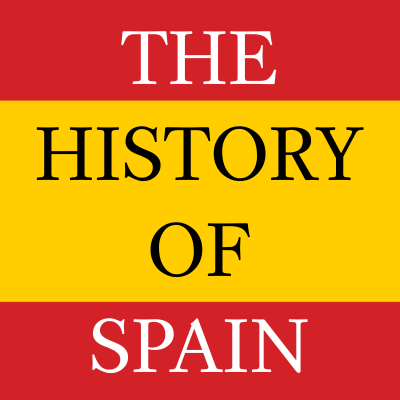
Reconquista starts! Pelayo and Covadonga
This is episode 22 called Reconquista starts! Pelayo and Covadonga and in this episode you will learn:<br />
<br />
SHOW NOTES<br />
<br />
- Why a Christian kingdom first emerged in Asturias and not in other regions<br />
- A disucssion on the reliability of the Asturian Chronicles and the context in which they were written<br />
- The Asturian origins of Pelayo<br />
- Context of the Battle of Covadonga, the reasons for the revolt and the election of Pelayo<br />
- The actual scale of the Battle of Covadonga<br />
- Details of the Battle of Covadonga and its aftermath, with the rise of the caudillo Pelayo and the fragility of the newborn kingdom<br />
- The importance of Pedro, the Duke of Cantabria<br />
- The short reign of Favila of Asturias<br />
- What is the Reconquista: as a historical period, ideology, and colonization<br />
- What are the most common historiographic objections and challenges to the Reconquista<br />
- My opinion on the accuracy of the idea of the Reconquista: why, not without some buts, I find the Reconquista as a valid idea<br />
- Reflection about the use of exaggerations in historiography
<br />
SHOW NOTES<br />
<br />
- Why a Christian kingdom first emerged in Asturias and not in other regions<br />
- A disucssion on the reliability of the Asturian Chronicles and the context in which they were written<br />
- The Asturian origins of Pelayo<br />
- Context of the Battle of Covadonga, the reasons for the revolt and the election of Pelayo<br />
- The actual scale of the Battle of Covadonga<br />
- Details of the Battle of Covadonga and its aftermath, with the rise of the caudillo Pelayo and the fragility of the newborn kingdom<br />
- The importance of Pedro, the Duke of Cantabria<br />
- The short reign of Favila of Asturias<br />
- What is the Reconquista: as a historical period, ideology, and colonization<br />
- What are the most common historiographic objections and challenges to the Reconquista<br />
- My opinion on the accuracy of the idea of the Reconquista: why, not without some buts, I find the Reconquista as a valid idea<br />
- Reflection about the use of exaggerations in historiography
Sep 12, 201931:22

Formation and Society of al-Andalus
This is episode 21 called Formation and Society of al-Andalus and in this episode you will learn:<br />
<br />
SHOW NOTES<br />
<br />
- Why Musa ibn Nusayr and Tariq, the conquerors of the Visigothic Kingdom, fell into disgrace<br />
- How Musa's son Abd al-Aziz, wali (governor) of al-Andalus, pretended to establish his own dynasty in al-Andalus, and how he failed in attempting so<br />
- The objectives of wali al-Hurr, among them develop the administration of the Umayyad Caliphate in al-Andalus<br />
- How were lands distributed among the Muslim conquerors and settlers, and the different treatment that Arab and Berber settlers received<br />
- The mission of governor al-Sahm to develop the fiscal system of al-Andalus and how he finished the conquest of the Visigothic Kingdom, that was still present in Septimania<br />
- How realpolitik made religious divisions and identities vague<br />
- The key Battle of Toulouse, which proved that the Umayyad Caliphate was overestreched and why the Umayyad Caliphate didn't have the short-term aim to conquer Europe<br />
- What do dar al-Islam and dar al-harb mean and how it affected Muslim expansionism<br />
- The interim government of Abd al-Rahman al-Ghafiqi, future Arab leader in the Battle of Tours/Poitiers, and the appointment of wali Anbasa<br />
- Key concepts and vocabulary of the society of al-Andalus, such as the religious or ethnic division, or combination of both while differentiating Hispano-Goths who converted (Muladi) and those who didn't (Mozarabs)<br />
- The dhimmi status that the Peoples of the Book (Christians and Jews) received in Muslim states, and how that affected taxation with taxes such as jizya<br />
- The discrimination that the Peoples of the Book faced in Muslim Spain<br />
- The different legal and economic status that the nobility, middle classes, common people, slaves, and women received in al-Andalus<br />
- Long discussion on the origins and truth behind the convivencia, the theory that claims that Muslims, Christians and Jews coexisted peacefully in Islamic Spain
<br />
SHOW NOTES<br />
<br />
- Why Musa ibn Nusayr and Tariq, the conquerors of the Visigothic Kingdom, fell into disgrace<br />
- How Musa's son Abd al-Aziz, wali (governor) of al-Andalus, pretended to establish his own dynasty in al-Andalus, and how he failed in attempting so<br />
- The objectives of wali al-Hurr, among them develop the administration of the Umayyad Caliphate in al-Andalus<br />
- How were lands distributed among the Muslim conquerors and settlers, and the different treatment that Arab and Berber settlers received<br />
- The mission of governor al-Sahm to develop the fiscal system of al-Andalus and how he finished the conquest of the Visigothic Kingdom, that was still present in Septimania<br />
- How realpolitik made religious divisions and identities vague<br />
- The key Battle of Toulouse, which proved that the Umayyad Caliphate was overestreched and why the Umayyad Caliphate didn't have the short-term aim to conquer Europe<br />
- What do dar al-Islam and dar al-harb mean and how it affected Muslim expansionism<br />
- The interim government of Abd al-Rahman al-Ghafiqi, future Arab leader in the Battle of Tours/Poitiers, and the appointment of wali Anbasa<br />
- Key concepts and vocabulary of the society of al-Andalus, such as the religious or ethnic division, or combination of both while differentiating Hispano-Goths who converted (Muladi) and those who didn't (Mozarabs)<br />
- The dhimmi status that the Peoples of the Book (Christians and Jews) received in Muslim states, and how that affected taxation with taxes such as jizya<br />
- The discrimination that the Peoples of the Book faced in Muslim Spain<br />
- The different legal and economic status that the nobility, middle classes, common people, slaves, and women received in al-Andalus<br />
- Long discussion on the origins and truth behind the convivencia, the theory that claims that Muslims, Christians and Jews coexisted peacefully in Islamic Spain
Aug 27, 201935:38

Muslim Umayyad conquest of Spain
This is episode 20 called Muslim Umayyad conquest of Spain and in this episode you will learn:<br />
<br />
SHOW NOTES<br />
<br />
- Introduction to a new and complex era of the history of Spain, the Medieval Spain of Muslims and Christians<br />
- What was Pre-Islamic Arabia like<br />
- A brief history of the rise of Islam, from the reveleations of the Prophet Muhammad to the Rashidun and Umayyad Caliphates<br />
- Why the conquest of Spain was the logical step to follow after the conquest of North Africa and what was the Iberian Peninsula like before their conquest<br />
- Introduction to the main characters of the initial conquest of the Visigothic Kingdom: Tariq ibn Ziyad and Count Julian<br />
- How the Muslim forces of Tariq crushed the Visigothic army of Roderic in the Battle of Guadalete, and the betrayal of the brothers of former King Wittiza, Oppas and Sisebut<br />
- Why the weak military system was a cause of the abrupt fall of the Visigothic Kingdom<br />
- How Tariq ibn Ziyad took advantage of his victory and transformed the expedition from a large-scale raid to a full-scale invasion<br />
- The probably brief proclamation of Oppas as King and the fall of Toledo, that eliminated the possibility of a centrally organized resistance<br />
- Why Musa ibn Nusayr, governor of Ifriqiya, prepared a second expedition to Spain<br />
- The resistance of Mérida and the Treaty of Orihuela, as an example of the numerous treaties of capitulation signed between the Muslim conquerors and the Christian nobles, priests and towns<br />
- The Muslim conquest of the Ebro Valley, Cantabria, Asturias and Galicia under Musa and Tariq<br />
- What was the strategy followed to conquer the Iberian Peninsula<br />
- The unhappy ending of Musa and Tariq<br />
- How was the success of the Muslim conquest interpreted by both Muslims and Christians<br />
- Reflection on the common motivations that all conquests have
<br />
SHOW NOTES<br />
<br />
- Introduction to a new and complex era of the history of Spain, the Medieval Spain of Muslims and Christians<br />
- What was Pre-Islamic Arabia like<br />
- A brief history of the rise of Islam, from the reveleations of the Prophet Muhammad to the Rashidun and Umayyad Caliphates<br />
- Why the conquest of Spain was the logical step to follow after the conquest of North Africa and what was the Iberian Peninsula like before their conquest<br />
- Introduction to the main characters of the initial conquest of the Visigothic Kingdom: Tariq ibn Ziyad and Count Julian<br />
- How the Muslim forces of Tariq crushed the Visigothic army of Roderic in the Battle of Guadalete, and the betrayal of the brothers of former King Wittiza, Oppas and Sisebut<br />
- Why the weak military system was a cause of the abrupt fall of the Visigothic Kingdom<br />
- How Tariq ibn Ziyad took advantage of his victory and transformed the expedition from a large-scale raid to a full-scale invasion<br />
- The probably brief proclamation of Oppas as King and the fall of Toledo, that eliminated the possibility of a centrally organized resistance<br />
- Why Musa ibn Nusayr, governor of Ifriqiya, prepared a second expedition to Spain<br />
- The resistance of Mérida and the Treaty of Orihuela, as an example of the numerous treaties of capitulation signed between the Muslim conquerors and the Christian nobles, priests and towns<br />
- The Muslim conquest of the Ebro Valley, Cantabria, Asturias and Galicia under Musa and Tariq<br />
- What was the strategy followed to conquer the Iberian Peninsula<br />
- The unhappy ending of Musa and Tariq<br />
- How was the success of the Muslim conquest interpreted by both Muslims and Christians<br />
- Reflection on the common motivations that all conquests have
Aug 09, 201942:18
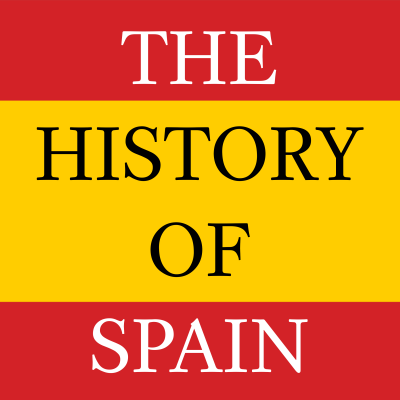
Visigothic Twilight
This is episode 19 called Visigothic Twilight and in this episode you will learn:<br />
<br />
SHOW NOTES<br />
<br />
- The succession of Recceswinth and the rebellion of Paul against Wamba<br />
- The social problems that late 7th century Visigothic Kingdom was facing<br />
- The coup of Erwig and Julian of Toledo to disqualify Wamba as king<br />
- Why Julian of Toledo supported the coup and his fervent antisemitism<br />
- The weakness of Erwig and the backstabbing of his successor Egica<br />
- The ruthless rule of Egica and his brutal antisemitic policies<br />
- The weak rule of Egica's son Wittiza and the famines and plagues of his rule<br />
- The coup of Roderic (Rodrigo in Spanish), and the emergence of the pretenders Agila II in northeastern Spain and Oppas, leaving the Visigothic Kingdom divided right before the Muslim conquest<br />
- Final thoughts on the key political features of the Visigothic Kingdom
<br />
SHOW NOTES<br />
<br />
- The succession of Recceswinth and the rebellion of Paul against Wamba<br />
- The social problems that late 7th century Visigothic Kingdom was facing<br />
- The coup of Erwig and Julian of Toledo to disqualify Wamba as king<br />
- Why Julian of Toledo supported the coup and his fervent antisemitism<br />
- The weakness of Erwig and the backstabbing of his successor Egica<br />
- The ruthless rule of Egica and his brutal antisemitic policies<br />
- The weak rule of Egica's son Wittiza and the famines and plagues of his rule<br />
- The coup of Roderic (Rodrigo in Spanish), and the emergence of the pretenders Agila II in northeastern Spain and Oppas, leaving the Visigothic Kingdom divided right before the Muslim conquest<br />
- Final thoughts on the key political features of the Visigothic Kingdom
Jul 29, 201927:19
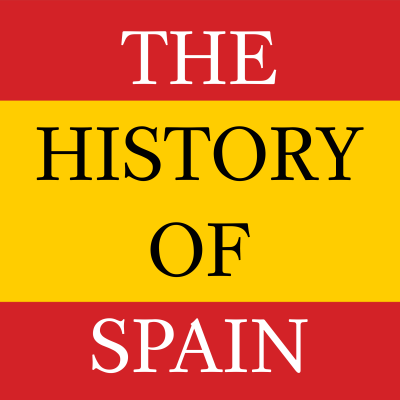
Tyranny and Peace
This is episode 18 called Tyranny and Peace and in this episode you will learn: […]
Jul 11, 201930:11

Changing dynasties
This is episode 17 called Changing dynasties and in this episode you will learn:<br />
<br />
SHOW NOTES<br />
<br />
- What was the ideal of good government in 7th century Christian Europe<br />
- The early internal problems of Sisebut due to eclipses<br />
- Sisebut's campaign against Byzantine's Spania, and why he decided not to completely expel them from Spain<br />
- The start of a trend under Sisebut: anti-Jewish policies, fake conversions and the problem of crypto-Jews<br />
- The passive role of the Church in the forced conversions of Sisebut<br />
- Suintila's successful campaigns against the Vascones and his success in ejecting the Byzantines from the Iberian Peninsula, which meant that Suintila became the first king of all Spain<br />
- The failed attempts of Suintila to centralize and his overthrown led by Sisenand<br />
- What was a agreed in the Fourth Council of Toledo to limit royal power while securing more strongly the position of the king<br />
- The reigns of Chintila and Tulga where the position of the king was very weak, and an explanation of why was that the case<br />
- The successful rebellion of 79-year-old Chindasuinth against Tulga<br />
- Intellectual achievements of 7th century Visigothic Spain and why was Spain the intellectual and cultural center of Western Europe in that period<br />
- Reflection on why 7th century Visigothic kings failed to centralize unlike Leovigild and Reccared
<br />
SHOW NOTES<br />
<br />
- What was the ideal of good government in 7th century Christian Europe<br />
- The early internal problems of Sisebut due to eclipses<br />
- Sisebut's campaign against Byzantine's Spania, and why he decided not to completely expel them from Spain<br />
- The start of a trend under Sisebut: anti-Jewish policies, fake conversions and the problem of crypto-Jews<br />
- The passive role of the Church in the forced conversions of Sisebut<br />
- Suintila's successful campaigns against the Vascones and his success in ejecting the Byzantines from the Iberian Peninsula, which meant that Suintila became the first king of all Spain<br />
- The failed attempts of Suintila to centralize and his overthrown led by Sisenand<br />
- What was a agreed in the Fourth Council of Toledo to limit royal power while securing more strongly the position of the king<br />
- The reigns of Chintila and Tulga where the position of the king was very weak, and an explanation of why was that the case<br />
- The successful rebellion of 79-year-old Chindasuinth against Tulga<br />
- Intellectual achievements of 7th century Visigothic Spain and why was Spain the intellectual and cultural center of Western Europe in that period<br />
- Reflection on why 7th century Visigothic kings failed to centralize unlike Leovigild and Reccared
Jun 14, 201934:01

Visigothic conversion to Catholicism
This is episode 16 called Visigothic conversion to Catholicism and in this episode you will learn:<br />
<br />
SHOW NOTES<br />
<br />
- Why there was a religious conflict in Visigothic Spain between Catholics and Arians<br />
- Why the reformed Arianism of Leovigild didn't work and why it was so difficult to make Catholicism the state religion of the Visigothic Kingdom<br />
- What King Reccared did to reduce opposition following his conversion<br />
- Details about the three attempts to overthrow Reccared between his personal conversion and the Third Council of Toledo and how the Visigoths repelled the Frankish invasion of Septimania<br />
- Reccared's strategy to strengthen royal power using the Church<br />
- Third Council of Toledo: Visigoths abdjure the Arian heresy and embrace Catholicism, alliance between the Visigothic state and the Church and firsts anti-Jewish policies<br />
- Why Reccared's religious policy wasn't that different from that of Leovigild and the implications of the religious unity of Visigoths and Hispano-Romans<br />
- Comparison of the Medieval and modern concept of nation and how Isidore of Seville blended the Visigoths and Hispano-Romans together in one nation<br />
- The idea of mater Spania and the breakup with the ancient historiography to develop a national narrative<br />
- Minor events of the reign of Reccared and the short reign of his son Liuva II<br />
- The reigns of Witteric and Gundemar<br />
- Reflection about the long-term consequences of the alliance between the Visigothic state and the Catholic Church and the unique mix of caesaropapism and theocracy that resulted from it
<br />
SHOW NOTES<br />
<br />
- Why there was a religious conflict in Visigothic Spain between Catholics and Arians<br />
- Why the reformed Arianism of Leovigild didn't work and why it was so difficult to make Catholicism the state religion of the Visigothic Kingdom<br />
- What King Reccared did to reduce opposition following his conversion<br />
- Details about the three attempts to overthrow Reccared between his personal conversion and the Third Council of Toledo and how the Visigoths repelled the Frankish invasion of Septimania<br />
- Reccared's strategy to strengthen royal power using the Church<br />
- Third Council of Toledo: Visigoths abdjure the Arian heresy and embrace Catholicism, alliance between the Visigothic state and the Church and firsts anti-Jewish policies<br />
- Why Reccared's religious policy wasn't that different from that of Leovigild and the implications of the religious unity of Visigoths and Hispano-Romans<br />
- Comparison of the Medieval and modern concept of nation and how Isidore of Seville blended the Visigoths and Hispano-Romans together in one nation<br />
- The idea of mater Spania and the breakup with the ancient historiography to develop a national narrative<br />
- Minor events of the reign of Reccared and the short reign of his son Liuva II<br />
- The reigns of Witteric and Gundemar<br />
- Reflection about the long-term consequences of the alliance between the Visigothic state and the Catholic Church and the unique mix of caesaropapism and theocracy that resulted from it
May 29, 201930:34
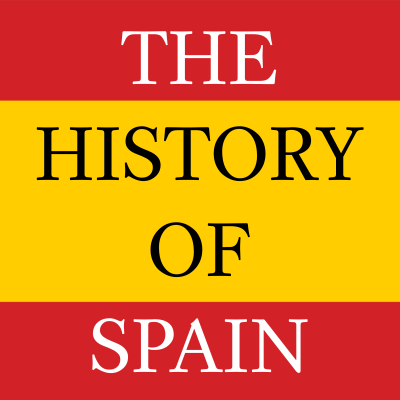
Leovigild, restorer and unifier
This is episode 15 called Leovigild, restorer and unifier, and in this episode you will learn:<br />
<br />
SHOW NOTES<br />
<br />
- The solution of Liuva to save the Visigothic Kingdom and the importance of that decision<br />
- Leovigild's successful campaign against the Byzantine province of Spania<br />
- The first campaign against self-governed areas in Baetica<br />
- Visigothic campaign in the north to conquer the buffer zone between the Suebi and themselves and the short campaign against the Suebi<br />
- The conquest of the last self-governed region of southern Spain, Orospeda<br />
- Leovigild's legal, administrative and territorial reforms to strengthen the Visigothic state and unify the Goths and Hispano-Romans to rule over a more homogenous society<br />
- The background of the rebellion of his son Hermenegild<br />
- Why Hermenegild's rebellion wasn't a religious nor an ethnic war<br />
- The attempts of Leovigild to solve the religious issue by imposing religious unity with a national, reformed, and more Catholic version of Arianism<br />
- How Hermenegild's rebellion failed<br />
- The last conquest of Leovigild: the annexation of the Kingdom of the Suebi<br />
- How the economy of Visigothic Spain was<br />
- Reflection on the importance and true legacy of Leovigild's reign
<br />
SHOW NOTES<br />
<br />
- The solution of Liuva to save the Visigothic Kingdom and the importance of that decision<br />
- Leovigild's successful campaign against the Byzantine province of Spania<br />
- The first campaign against self-governed areas in Baetica<br />
- Visigothic campaign in the north to conquer the buffer zone between the Suebi and themselves and the short campaign against the Suebi<br />
- The conquest of the last self-governed region of southern Spain, Orospeda<br />
- Leovigild's legal, administrative and territorial reforms to strengthen the Visigothic state and unify the Goths and Hispano-Romans to rule over a more homogenous society<br />
- The background of the rebellion of his son Hermenegild<br />
- Why Hermenegild's rebellion wasn't a religious nor an ethnic war<br />
- The attempts of Leovigild to solve the religious issue by imposing religious unity with a national, reformed, and more Catholic version of Arianism<br />
- How Hermenegild's rebellion failed<br />
- The last conquest of Leovigild: the annexation of the Kingdom of the Suebi<br />
- How the economy of Visigothic Spain was<br />
- Reflection on the importance and true legacy of Leovigild's reign
May 17, 201934:18

Ostrogothic interval and Byzantine invasion
This is episode 14 called Ostrogothic interval and Byzantine invasion and in this episode you will learn:<br />
<br />
SHOW NOTES<br />
<br />
- The context and political map of Europe and North Africa after the traumatic Battle of Vouillé<br />
- What happened right after the Battle of Vouillé: Visigothic retreat led by Gesalic and Ostrogothic aid<br />
- The efforts of Theodoric the Great to unite the Goths under one rule to stop Frankish advance<br />
- How weak Visigothic rule was in Hispania at that time<br />
- How limited Theodoric's influence was over the Visigoths due to the power of the appointed governor, Theudis<br />
- The fall of the Balti dynasty and the problems that that caused to the long-term stability of the Visigothic Kingdom<br />
- A revival of Roman power in North Africa and Italy under Justinian<br />
- Decreasing Visigothic control over Hispania and civil war between Agila and Athanagild<br />
- Byzantine conquest of southern Spain due to Justinian's intervention in the civil war and the foundation of the province of Spania<br />
- The reemergence of sources on the Suebi: migrations of Romano-Britons and Suebic conversion to Catholicism<br />
- How the Visigothic Kingdom was definitely established in Toledo and the election of Liuva I<br />
- A depiction of the society of Visigothic Spain, talking about the heterogenous population and social stratification<br />
- A reflection on the importance of having a strong system of dynastic succession
<br />
SHOW NOTES<br />
<br />
- The context and political map of Europe and North Africa after the traumatic Battle of Vouillé<br />
- What happened right after the Battle of Vouillé: Visigothic retreat led by Gesalic and Ostrogothic aid<br />
- The efforts of Theodoric the Great to unite the Goths under one rule to stop Frankish advance<br />
- How weak Visigothic rule was in Hispania at that time<br />
- How limited Theodoric's influence was over the Visigoths due to the power of the appointed governor, Theudis<br />
- The fall of the Balti dynasty and the problems that that caused to the long-term stability of the Visigothic Kingdom<br />
- A revival of Roman power in North Africa and Italy under Justinian<br />
- Decreasing Visigothic control over Hispania and civil war between Agila and Athanagild<br />
- Byzantine conquest of southern Spain due to Justinian's intervention in the civil war and the foundation of the province of Spania<br />
- The reemergence of sources on the Suebi: migrations of Romano-Britons and Suebic conversion to Catholicism<br />
- How the Visigothic Kingdom was definitely established in Toledo and the election of Liuva I<br />
- A depiction of the society of Visigothic Spain, talking about the heterogenous population and social stratification<br />
- A reflection on the importance of having a strong system of dynastic succession
Apr 29, 201930:05
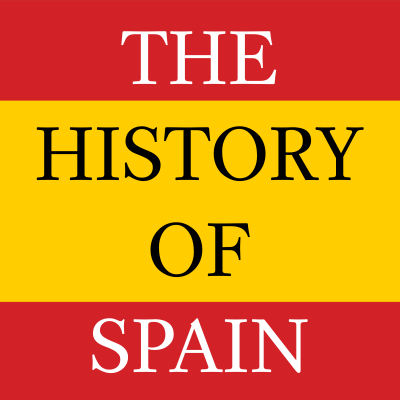
Good bye, Roman Empire!
This is episode 13 called Good bye, Roman Empire! and in this episode you will learn:<br />
<br />
SHOW NOTES<br />
<br />
- Who were Ricimer and Majorian, leaders of the coup d'état against Emperor Avitus<br />
- The situation of Hispania, especially in Gallaecia that was divided between two factions of Suebi<br />
- The very delicate situation of the Western Roman Empire when Emperor Majorian took power in 457<br />
- The impressive achievements and conquests of Majorian, against the Vandals, Visigoths, Burgundians and Suebi<br />
- What went wrong in 460 that ended the dream of the restoration of the Western Roman Empire<br />
- How the Visigoths under Theodoric II and Euric conquered much of Hispania<br />
- How the Kingdom of the Suebi was restored under King Remismund, as a vassal state of the Visigoths, and why we don't have information about the Suebi for the next 80 years<br />
- The fall of the Western Roman Empire in 476 and the peak of Visigothic power<br />
- The consolidation of the Visigothic state with the promulgation of the Code of Euric and Breviary of Alaric and the division of Goths and Romans by law<br />
- Where did the Visigoths settle in Hispania and how they distributed its lands<br />
- The Frankish expansionism under Clovis I and the decisive Battle of Vouillé of 507, that supposed the end of the Visigothic Kingdom of Toulouse, the death of Alaric II, the weakening of the Balti dynasty and the end of Visigothic supremacyA reflection on the importance of not overextending
<br />
SHOW NOTES<br />
<br />
- Who were Ricimer and Majorian, leaders of the coup d'état against Emperor Avitus<br />
- The situation of Hispania, especially in Gallaecia that was divided between two factions of Suebi<br />
- The very delicate situation of the Western Roman Empire when Emperor Majorian took power in 457<br />
- The impressive achievements and conquests of Majorian, against the Vandals, Visigoths, Burgundians and Suebi<br />
- What went wrong in 460 that ended the dream of the restoration of the Western Roman Empire<br />
- How the Visigoths under Theodoric II and Euric conquered much of Hispania<br />
- How the Kingdom of the Suebi was restored under King Remismund, as a vassal state of the Visigoths, and why we don't have information about the Suebi for the next 80 years<br />
- The fall of the Western Roman Empire in 476 and the peak of Visigothic power<br />
- The consolidation of the Visigothic state with the promulgation of the Code of Euric and Breviary of Alaric and the division of Goths and Romans by law<br />
- Where did the Visigoths settle in Hispania and how they distributed its lands<br />
- The Frankish expansionism under Clovis I and the decisive Battle of Vouillé of 507, that supposed the end of the Visigothic Kingdom of Toulouse, the death of Alaric II, the weakening of the Balti dynasty and the end of Visigothic supremacyA reflection on the importance of not overextending
Apr 14, 201932:27

The Apogee of the Kingdom of the Suebi
This is episode 12 called The Apogee of the Kingdom of the Suebi and in this episode you will learn:<br />
<br />
SHOW NOTES<br />
<br />
- The situation of Hispania and Italy after the Vandals had left Hispania for North Africa<br />
- How weak the foundations of the Kingdom of the Suebi under King Hermeric were<br />
- The peak of the bagaudae groups in Gaul and Hispania and the expansion of the Vandal Kingdom<br />
- The ambitious Suebic campaign of King Rechila to conquer Lusitania and Baetica<br />
- How the Suebic control actually worked in those provinces<br />
- The progressive emotional disconnection between the Hispano-Romans and the Western Roman Empire as Valentinian's III expeditions failed<br />
- The firsts of King Rechiar: first Catholic Germanic king and the issue of coins<br />
- Why the Visigoths and the Suebi briefly sealed an alliance<br />
- How the threat of the Huns ended their alliance<br />
- How King Rechiar took advantage of the weakness of the Empire to invade Hispania Carthaginensis and Tarraconensis<br />
- How the Visigoths decisively crushed the Suebi in 456 and caused the disintegration of the kingdom
<br />
SHOW NOTES<br />
<br />
- The situation of Hispania and Italy after the Vandals had left Hispania for North Africa<br />
- How weak the foundations of the Kingdom of the Suebi under King Hermeric were<br />
- The peak of the bagaudae groups in Gaul and Hispania and the expansion of the Vandal Kingdom<br />
- The ambitious Suebic campaign of King Rechila to conquer Lusitania and Baetica<br />
- How the Suebic control actually worked in those provinces<br />
- The progressive emotional disconnection between the Hispano-Romans and the Western Roman Empire as Valentinian's III expeditions failed<br />
- The firsts of King Rechiar: first Catholic Germanic king and the issue of coins<br />
- Why the Visigoths and the Suebi briefly sealed an alliance<br />
- How the threat of the Huns ended their alliance<br />
- How King Rechiar took advantage of the weakness of the Empire to invade Hispania Carthaginensis and Tarraconensis<br />
- How the Visigoths decisively crushed the Suebi in 456 and caused the disintegration of the kingdom
Mar 30, 201927:34

Barbarians against Barbarians
This is episode 11 called Barbarians against Barbarians and in this episode you will learn:<br />
<br />
SHOW NOTES<br />
<br />
- The origins of the Visigoths and the Hunnic threat<br />
- The turbulent and complicated relationship between Visigoths and Romans<br />
- How the Visigoths first entered Hispania under Ataulf<br />
- The rule of Wallia and his campaign under Roman service that destroyed the Alans and Silingi Vandals of Hispania<br />
- What territories Honorius gave to the Visigoths in Gaul and why he gave those territories (spoiler: to suppress the bagaudae)<br />
- How the Imperial army assissted the Suebi against the Vandals of Gunderic to prevent them from becoming the dominant force in Hispania<br />
- Yet another crisis with the failed campaign of Castinus in Hispania and the death of Honorius, the usurpation of Joannes and the rise of Flavius Aetius<br />
- The period of hegemony of the Vandals in Hispania before leaving Hispania for North Africa in 429<br />
- Reflections about the Imperial strategy of playing barbarians off against each other
<br />
SHOW NOTES<br />
<br />
- The origins of the Visigoths and the Hunnic threat<br />
- The turbulent and complicated relationship between Visigoths and Romans<br />
- How the Visigoths first entered Hispania under Ataulf<br />
- The rule of Wallia and his campaign under Roman service that destroyed the Alans and Silingi Vandals of Hispania<br />
- What territories Honorius gave to the Visigoths in Gaul and why he gave those territories (spoiler: to suppress the bagaudae)<br />
- How the Imperial army assissted the Suebi against the Vandals of Gunderic to prevent them from becoming the dominant force in Hispania<br />
- Yet another crisis with the failed campaign of Castinus in Hispania and the death of Honorius, the usurpation of Joannes and the rise of Flavius Aetius<br />
- The period of hegemony of the Vandals in Hispania before leaving Hispania for North Africa in 429<br />
- Reflections about the Imperial strategy of playing barbarians off against each other
Mar 14, 201932:40
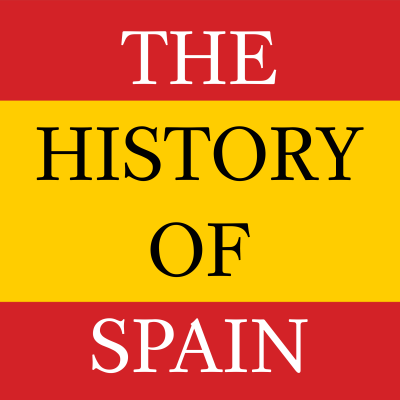
First Barbarian Invasions: Vandals, Suebi and Alans
This is episode 10 called First Barbarian Invasions: Vandals, Suebi and Alans and in this episode you will learn:<br />
<br />
SHOW NOTES<br />
<br />
- Why the Migration Period started in the first place<br />
- Who the Alans, Vandals and Suebi were: their origins, characteristics and how many were they<br />
- What consequences had the withdraw of Imperial troops from Britannia, Gaul and Germania: the usurpation of Constantine III and execution of Stilicho<br />
- Why Constantine III attacked Hispania before attempting to attack Italy<br />
- About the usurpation of Gerontius and Maximus of Hispania, and why the Vandals, Suebi and Alans didn't enter the Iberian Peninsula as invaders<br />
- How the Vandals, Suebi and Alans parceled out Hispania<br />
- How the Hispano-Romans received the immigrants, positive views like that of Orosius or negative like that of Hydatius, and why the barbarians weren't that barbarian<br />
- How the usurpers Constantine III, and Gerontius-Maximus were defeated<br />
- How historiography has treated the Suebi and why most views are wrong<br />
- Reflections on the importance of how we label events while telling history
<br />
SHOW NOTES<br />
<br />
- Why the Migration Period started in the first place<br />
- Who the Alans, Vandals and Suebi were: their origins, characteristics and how many were they<br />
- What consequences had the withdraw of Imperial troops from Britannia, Gaul and Germania: the usurpation of Constantine III and execution of Stilicho<br />
- Why Constantine III attacked Hispania before attempting to attack Italy<br />
- About the usurpation of Gerontius and Maximus of Hispania, and why the Vandals, Suebi and Alans didn't enter the Iberian Peninsula as invaders<br />
- How the Vandals, Suebi and Alans parceled out Hispania<br />
- How the Hispano-Romans received the immigrants, positive views like that of Orosius or negative like that of Hydatius, and why the barbarians weren't that barbarian<br />
- How the usurpers Constantine III, and Gerontius-Maximus were defeated<br />
- How historiography has treated the Suebi and why most views are wrong<br />
- Reflections on the importance of how we label events while telling history
Feb 27, 201932:59
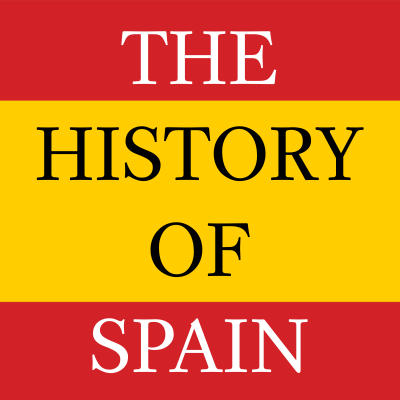
Hispania: Dominate and Expansion of Christianity
This is episode 9 called Hispania: Dominate and Expansion of Christianity and in this episode you will learn:<br />
<br />
SHOW NOTES<br />
<br />
- What aspects did the Crisis of the Third Century change in Hispania and the Roman Empire<br />
- About the firsts Germanic raids in Hispania, as well as the brief alliegance of Hispania to the breakaway Gallic Empire<br />
- A discussion on the three ecclesiastical theories (preaching of Saint James the Greater, preaching of the Seven Apostolic Men and arrival of Paul the Apostle) that try to explain how Christianity expanded into Hispania<br />
- How did Christianity arrive from North Africa and which were the first Christian persecutions in Hispania<br />
- What reforms did Diocletian enact to end the Crisis of the Third Century and what was the bagaudae phenomenon<br />
- A very brief talk about the civil wars that plagued most of the 4th century, Constantine's Edict of Milan and how was the ecclesiastical hierarchy substituting Roman institutions on a local level<br />
- What Priscillianism was<br />
- A discussion on the reign of Theodosius, the last Hispano-Roman emperor and last emperor of a unified Roman Empire<br />
- Roman legacy in Spain and in the world. A travel guide for those interested in visiting Roman sites in Spain
<br />
SHOW NOTES<br />
<br />
- What aspects did the Crisis of the Third Century change in Hispania and the Roman Empire<br />
- About the firsts Germanic raids in Hispania, as well as the brief alliegance of Hispania to the breakaway Gallic Empire<br />
- A discussion on the three ecclesiastical theories (preaching of Saint James the Greater, preaching of the Seven Apostolic Men and arrival of Paul the Apostle) that try to explain how Christianity expanded into Hispania<br />
- How did Christianity arrive from North Africa and which were the first Christian persecutions in Hispania<br />
- What reforms did Diocletian enact to end the Crisis of the Third Century and what was the bagaudae phenomenon<br />
- A very brief talk about the civil wars that plagued most of the 4th century, Constantine's Edict of Milan and how was the ecclesiastical hierarchy substituting Roman institutions on a local level<br />
- What Priscillianism was<br />
- A discussion on the reign of Theodosius, the last Hispano-Roman emperor and last emperor of a unified Roman Empire<br />
- Roman legacy in Spain and in the world. A travel guide for those interested in visiting Roman sites in Spain
Feb 14, 201933:02

Hispania: Principate and Romanization
This is episode 8 called Hispania: Principate and Romanization and in this episode you will learn:<br />
<br />
SHOW NOTES<br />
<br />
- What does Romanization mean<br />
- What aspects Romanization involved<br />
- Which were the key elements or causes for the Romanization of Hispania<br />
- The internal elements that explain this process of acculturation<br />
- Which were the different phases of Romanization and why wasn't the process geographically homogenous<br />
- Which were the key economic sectors of Hispania during the Principate<br />
- A discussion on the importance of the policies of colonization of Julius Caesar and Emperor Augustus, as well as the Edict of Latinization of Vespasian<br />
- Why did Vespasian issue the Edict of Latinization and what consequences did that have<br />
- The reign of two Hispano-Roman Emperors: Trajan and Hadrian<br />
- The decadence of the Roman Empire with the Antonine Plague under the reigns of Marcus Aurelius and Commodus<br />
- The Severan dynasty and how the Crisis of the Third Century started
<br />
SHOW NOTES<br />
<br />
- What does Romanization mean<br />
- What aspects Romanization involved<br />
- Which were the key elements or causes for the Romanization of Hispania<br />
- The internal elements that explain this process of acculturation<br />
- Which were the different phases of Romanization and why wasn't the process geographically homogenous<br />
- Which were the key economic sectors of Hispania during the Principate<br />
- A discussion on the importance of the policies of colonization of Julius Caesar and Emperor Augustus, as well as the Edict of Latinization of Vespasian<br />
- Why did Vespasian issue the Edict of Latinization and what consequences did that have<br />
- The reign of two Hispano-Roman Emperors: Trajan and Hadrian<br />
- The decadence of the Roman Empire with the Antonine Plague under the reigns of Marcus Aurelius and Commodus<br />
- The Severan dynasty and how the Crisis of the Third Century started
Jan 29, 201938:43

Roman Conquest of Hispania: Native Resistance
This is episode 7 called Roman Conquest of Hispania: Native Resistance and in this episode you will learn:<br />
<br />
SHOW NOTES<br />
<br />
- Why Rome took so much time conquering Hispania<br />
- What interests did Rome have in the Iberian Peninsula<br />
- What happened in the Iberian Revolt of 197-195 BC and why did Iberians revolt multiple times<br />
- What happened in the First and Second Celtiberian Wars<br />
- Which were the two major wars that were the turning point in the Roman conquest of Hispania: the pacification of Lusitania with the defeat of Viriathus and the Numantine War<br />
- The internal tensions in Italy and the causes of the fall of the Roman Republic<br />
- Why did Sertorius fled for Hispania<br />
- A brief talk about the civil wars that ended the Republican system<br />
- Why and how did Augustus completed the conquest of Hispania with the Cantabrian Wars in northern Spain<br />
- Reflections on the importance of the devotio
<br />
SHOW NOTES<br />
<br />
- Why Rome took so much time conquering Hispania<br />
- What interests did Rome have in the Iberian Peninsula<br />
- What happened in the Iberian Revolt of 197-195 BC and why did Iberians revolt multiple times<br />
- What happened in the First and Second Celtiberian Wars<br />
- Which were the two major wars that were the turning point in the Roman conquest of Hispania: the pacification of Lusitania with the defeat of Viriathus and the Numantine War<br />
- The internal tensions in Italy and the causes of the fall of the Roman Republic<br />
- Why did Sertorius fled for Hispania<br />
- A brief talk about the civil wars that ended the Republican system<br />
- Why and how did Augustus completed the conquest of Hispania with the Cantabrian Wars in northern Spain<br />
- Reflections on the importance of the devotio
Jan 14, 201934:29

Roman Conquest of Hispania: Second Punic War
This is episode 6 called Roman Conquest of Hispania: Second Punic War and in this episode you will learn:<br />
<br />
Show notes<br />
<br />
- Which were the two rising Mediterranean powers: Carthage and Rome<br />
- Why was Carthage interested in controlling Spain<br />
- How and why the Second Punic War started<br />
- Which was the Hannibal's strategy to win the war<br />
- How did Rome almost fall<br />
- About the hopes of winning with the campaigns of Scipio Africanus in Spain and the decisive Battle of Illipa in 206 BC<br />
- How did the Second Punic War end<br />
- How the war affected Spain and the long-term impact of the Second Punic War for Rome and Hispania<br />
- Reflections about an alternative scenario where Carthage wins the war
<br />
Show notes<br />
<br />
- Which were the two rising Mediterranean powers: Carthage and Rome<br />
- Why was Carthage interested in controlling Spain<br />
- How and why the Second Punic War started<br />
- Which was the Hannibal's strategy to win the war<br />
- How did Rome almost fall<br />
- About the hopes of winning with the campaigns of Scipio Africanus in Spain and the decisive Battle of Illipa in 206 BC<br />
- How did the Second Punic War end<br />
- How the war affected Spain and the long-term impact of the Second Punic War for Rome and Hispania<br />
- Reflections about an alternative scenario where Carthage wins the war
Dec 13, 201828:01
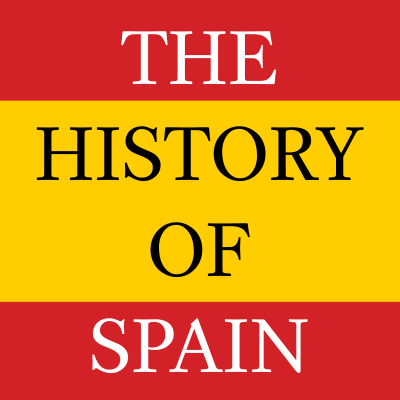
Second Iron Age: Iberians, Celts and other Pre-Roman peoples
This is episode 5 called Second Iron Age: Iberians, Celts and other Pre-Roman peoples and in this episode you will learn:<br />
<br />
SHOW NOTES<br />
<br />
- Everything about the Pre-Indo-European Iberians: Iberian alphabets, urbanism, warfare and weapons, society and politics, traditions, religion, burial customs and trade<br />
- Everything about the Indo-European Celts: Celtic economy, social institutions, warfare, religion, urbanism, cultures and society<br />
- The Celtiberians, who were famous for being ferocious and brave warriors<br />
- The ancient Basques, the Vascones<br />
- Reflections on the manipulation about the Basque identity and ethnicity done by Basque nationalism
<br />
SHOW NOTES<br />
<br />
- Everything about the Pre-Indo-European Iberians: Iberian alphabets, urbanism, warfare and weapons, society and politics, traditions, religion, burial customs and trade<br />
- Everything about the Indo-European Celts: Celtic economy, social institutions, warfare, religion, urbanism, cultures and society<br />
- The Celtiberians, who were famous for being ferocious and brave warriors<br />
- The ancient Basques, the Vascones<br />
- Reflections on the manipulation about the Basque identity and ethnicity done by Basque nationalism
Nov 30, 201821:25

First Iron Age: Tartessos, Phoenicians and Greeks
This is episode 4 called First Iron Age: Tartessos, Phoenicians and Greeks and in this episode you will learn:<br />
<br />
SHOW NOTES<br />
<br />
- The emergence of Tartessos in the Guadalquivir Valley area, the literary references and the possible location of their capital<br />
- The importance of mineral resources for the rise of Tartessian culture, that is a confluence between native and Phoenician cultures<br />
- The findings of El Turuñuelo led by Sebastián Celestino and Esther Rodríguez<br />
- The political system and myths of Tartessos<br />
- A quick overview to Tartessian history, from their rise to their fall in the 5th century BC<br />
- Where did the Phoenicians come from, where did they build their colonies and in what did they base their power<br />
- The peaceful collaboration between Tartessians and Phoenicians<br />
- What did the Phoenicians bring to Spain<br />
- The fall of Phoenician power after the fall of Tyre in 573 BC<br />
- The Greek Phocaean colonies like Emporion or Rhodes in eastern Spain (Catalonia and Valencia)<br />
- How and why were the Greek colonial expeditions organized<br />
- The rise of Emporion
<br />
SHOW NOTES<br />
<br />
- The emergence of Tartessos in the Guadalquivir Valley area, the literary references and the possible location of their capital<br />
- The importance of mineral resources for the rise of Tartessian culture, that is a confluence between native and Phoenician cultures<br />
- The findings of El Turuñuelo led by Sebastián Celestino and Esther Rodríguez<br />
- The political system and myths of Tartessos<br />
- A quick overview to Tartessian history, from their rise to their fall in the 5th century BC<br />
- Where did the Phoenicians come from, where did they build their colonies and in what did they base their power<br />
- The peaceful collaboration between Tartessians and Phoenicians<br />
- What did the Phoenicians bring to Spain<br />
- The fall of Phoenician power after the fall of Tyre in 573 BC<br />
- The Greek Phocaean colonies like Emporion or Rhodes in eastern Spain (Catalonia and Valencia)<br />
- How and why were the Greek colonial expeditions organized<br />
- The rise of Emporion
Nov 10, 201820:26
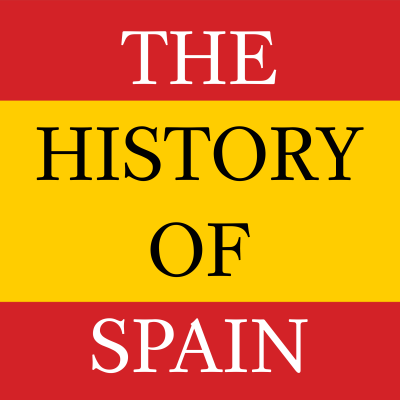
Paleolithic, Neolithic and Bronze Age in Iberia
This is episode 3 called Paleolithic, Neolithic and Bronze Age in Iberia and in this episode you will learn:<br />
<br />
SHOW NOTES<br />
<br />
- How was the Iberian Peninsula during the Prehistory, except for the Iron Age<br />
- Remark that Prehistory is the less-known period of human history, and that new archeological or genetic findings are constantly challenging previous theories<br />
- The archeological site of Atapuerca, the most important Prehistoric one of Spain and Europe<br />
- The first settlers of the Iberian Peninsula<br />
- The Cave of Altamira<br />
- The slow process of Neolithization, first in the south and southeast and later in the north<br />
- The urbanized and stratified town of Los Millares of the Spanish Copper Age<br />
- Recent genetic studies that indicate that there may have been a big migration of Indo-Europeans between the Copper and Bronze Age<br />
- The Argaric culture of the Bronze Age<br />
- Important changes in the Late Bronze period
<br />
SHOW NOTES<br />
<br />
- How was the Iberian Peninsula during the Prehistory, except for the Iron Age<br />
- Remark that Prehistory is the less-known period of human history, and that new archeological or genetic findings are constantly challenging previous theories<br />
- The archeological site of Atapuerca, the most important Prehistoric one of Spain and Europe<br />
- The first settlers of the Iberian Peninsula<br />
- The Cave of Altamira<br />
- The slow process of Neolithization, first in the south and southeast and later in the north<br />
- The urbanized and stratified town of Los Millares of the Spanish Copper Age<br />
- Recent genetic studies that indicate that there may have been a big migration of Indo-Europeans between the Copper and Bronze Age<br />
- The Argaric culture of the Bronze Age<br />
- Important changes in the Late Bronze period
Nov 10, 201819:10

Geographical conditions of the Iberian Peninsula
This is episode 2 called Geographical conditions of the Iberian Peninsula and in this episode you will learn the following:<br />
<br />
SHOW NOTES<br />
<br />
- How the geography of Spain has influenced its history<br />
- Why geography is very relevant to understand history<br />
- The main rivers and mountain ranges of Spain<br />
- The climate and terrain of Spain<br />
- The diversity in terms of climate between regions<br />
- Features like the lack of natural disasters or mineral resources<br />
- The political map of Spain<br />
- List of pros and cons of the geography of the Iberian Peninsula
<br />
SHOW NOTES<br />
<br />
- How the geography of Spain has influenced its history<br />
- Why geography is very relevant to understand history<br />
- The main rivers and mountain ranges of Spain<br />
- The climate and terrain of Spain<br />
- The diversity in terms of climate between regions<br />
- Features like the lack of natural disasters or mineral resources<br />
- The political map of Spain<br />
- List of pros and cons of the geography of the Iberian Peninsula
Nov 10, 201810:42
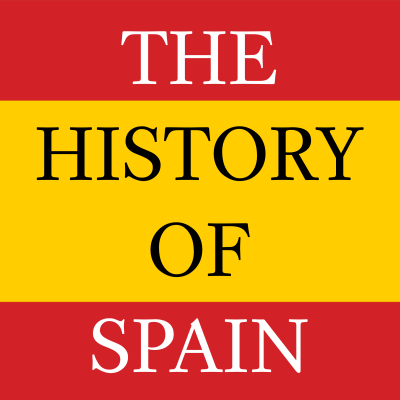
Introduction to The History of Spain Podcast
This is episode 1 called Introduction to THe History of Spain Podcast and in this episode you will learn:<br />
<br />
SHOW NOTES<br />
<br />
- The History of Spain Podcast is focused on Spanish history following a chronological order<br />
- The informative aim of the podcast and what will be covered<br />
- The regularity and length of the episodes<br />
- The Verdict section<br />
- Details about the content<br />
- Information about the monetization of The History of Spain Podcast through Patreon, ads, the store of the website and donations<br />
- Where can you find the podcast
<br />
SHOW NOTES<br />
<br />
- The History of Spain Podcast is focused on Spanish history following a chronological order<br />
- The informative aim of the podcast and what will be covered<br />
- The regularity and length of the episodes<br />
- The Verdict section<br />
- Details about the content<br />
- Information about the monetization of The History of Spain Podcast through Patreon, ads, the store of the website and donations<br />
- Where can you find the podcast
Nov 10, 201805:38